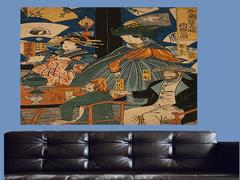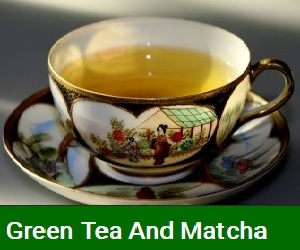Did you know that artwork from Japan’s Edo period continues to break auction records—and Hokusai’s Great Wave off Kanagawa, a Japanese woodblock masterpiece, has inspired generations of artists around the globe? The world of japanese woodblock is more than beautiful prints; it’s a living testament to how artistry, culture, and innovation intersect. Whether you’re an art enthusiast or new to the craft, this guide dives deep into Japanese woodblock’s legacy, the nuances behind the prints, and what makes them a cornerstone for collectors and creators alike.
-
What You'll Learn
-
The history and evolution of japanese woodblock art
-
Key techniques and processes behind woodblock printing
-
Iconic artists and masterpieces in the japanese woodblock tradition
-
How japanese woodblock influences modern art and culture
-
Tips for identifying and appreciating authentic japanese woodblock prints
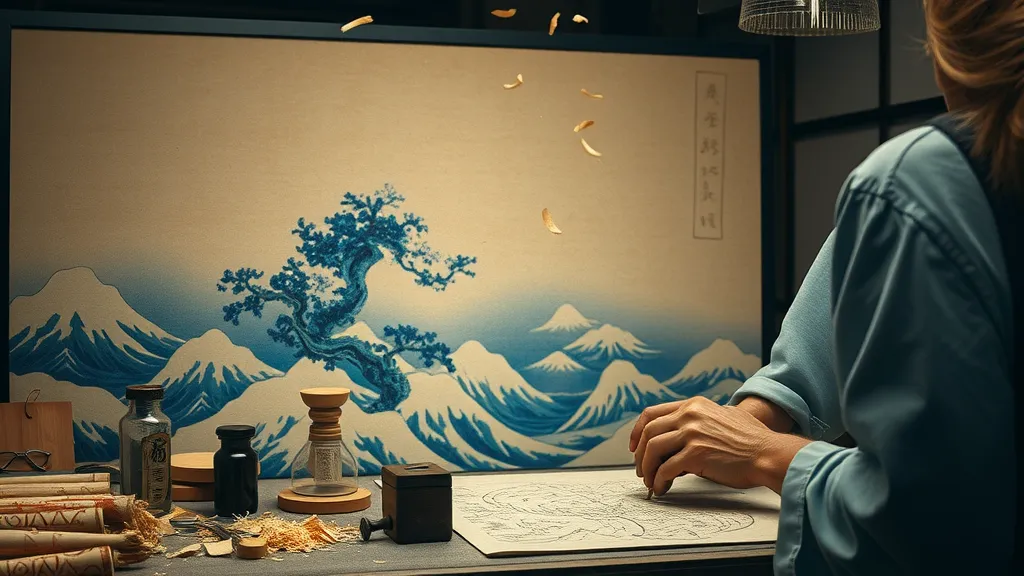
Japanese Woodblock: An Unconventional Artistic Legacy Revealed
The legacy of japanese woodblock art is as vibrant as it is unconventional. Unlike any other artistic genre, Japanese woodblock prints—known as ukiyo-e or “pictures of the floating world”—changed the way art was created and appreciated in both Japan and the wider world. These prints have been celebrated for their unique portrayal of everyday life, grand landscapes, and popular scenes like those of kabuki actors and tranquil nature. Japanese woodblock exemplifies how technical mastery—through careful carving, inking, and printing—combined with bold thematic choices, can lead to artworks with both cultural and enduring value.
The tradition of woodblock printing in Japan emerged during the Edo period, a time marked by peace and prosperity. The craftsmanship of japanese woodblock prints wasn’t purely decorative; it played a key role in chronicling the evolving urban and social landscapes across centuries. From the subtle use of cherry wood blocks and water-based pigments to innovative multi-color woodblock printmaking, the artistic and technical developments resulted in images loved by aristocrats and everyday people. Today, this legacy resonates with contemporary artists in places as far-flung as Los Angeles and throughout the world, proving that the hidden power of Japanese woodblock endures—and continues to surprise—across generations.
What is a Japanese Woodblock?
Defining Japanese Woodblock and Its Artistic Essence
A japanese woodblock is both a method and an object: it refers to an intricately carved wooden block—most often made from cherry wood—used to produce beautiful prints on paper. But more than just a craft, the process is a fusion of art and technology where every step—carving, inking, transferring—is vital. Japanese woodblock printing especially stands out because it uses water-based inks for a transparency and depth of color that oil-based alternatives can’t match, giving the prints a delicate yet enduring quality. The surfaces are often burnished by hand and show subtle gradients and shades—hallmarks of the medium’s expressive potential.
The art form’s essence lies in its collaborative nature. Creating a japanese woodblock print often involved three experts: the designer (who created the original artwork), the carver (who transferred the design onto the wooden block), and the printer (who applied ink and pressed the paper). This triad ensured not only remarkable technical precision but also a unity of vision that elevated the final artwork. Whether illustrating famous kabuki actors, lush mountain scenes, or daily life in bustling cities, japanese woodblock prints capture the fleeting beauty of a moment—and transform it into an enduring image.
How Japanese Woodblock Differs from Other Asian Art Techniques
While asian art encompasses many traditional methods, japanese woodblock art possesses unique distinguishing characteristics. For instance, Chinese woodcut prints often relied more on linear, black and white imagery, and less complex layering. In contrast, Japanese woodblock prints—particularly from the ukiyo-e tradition—pioneered advanced multi-block printing techniques. These allowed for intricate, vibrant designs using color on paper, producing vivid scenes with a large number of hues not commonly found in other traditions. Printmakers could highlight subtle shifts in light and emotion, producing artwork with a lyrical, almost ethereal feel.
Another distinguishing factor is the use of washi, a Japanese paper made from mulberry bark, which interacts exquisitely with water-based pigments. The grain of the wooden block and the softness of the paper combined to create a “floating” quality in the images—a literal and figurative nod to the floating world, or ukiyo. Compared to Korean or Chinese printmaking, japanese woodblock prints stand out for their artistic ambition, innovative themes, and the technical synchrony of multi-piece collaborations. These international differences helped propel the Japanese woodblock print as a sought-after collectable, influencing Asian and Western art movements alike.
The Name of the Japanese Woodblock: Terminology and Tradition
Exploring 'Ukiyo-e', the Heart of Japanese Woodblock Prints
The term ukiyo-e, often synonymous with japanese woodblock prints, means "pictures of the floating world." This artistic movement dominated from the 17th to 19th centuries in Japan and is central to the identity of woodblock printmaking. Ukiyo-e captured pleasures and transience—scenes from entertainment districts, everyday life, nature, and mythical landscapes—all with a focus on fleeting moments. From depictions of popular kabuki actors and beautiful courtesans to dramatic landscapes and natural wonders, ukiyo-e is vital to understanding the breadth of Japanese art. Artists like Hokusai and Hiroshige used the ukiyo-e method to such effect that their names are now inseparable from the legacy of woodblock prints worldwide.
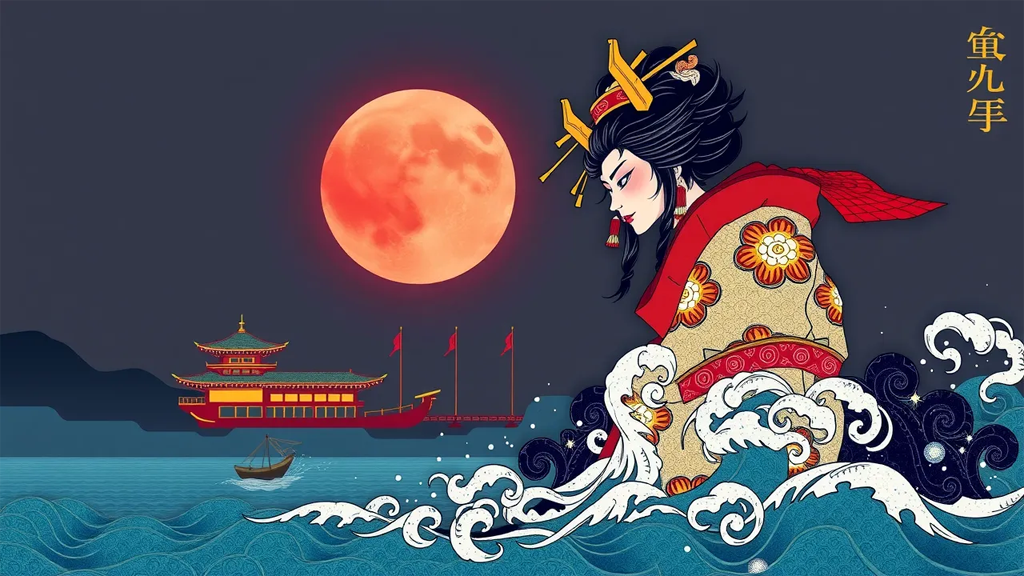
“Ukiyo” was originally a Buddhist term that meant “sad world,” reflective of life’s impermanence. By the Edo period, it adopted a more playful, secular interpretation: the floating world of urban pleasure. Ukiyo-e prints thus mirror both the humor and poignancy of life, securing their place as a primary lens through which we view not only historical Japanese society but the timeless rhythms of art and existence itself.
Evolution of Terms in Japanese Art and Woodblock Printing
Over centuries, terminology within japanese woodblock printing evolved as the art form grew and diversified. Early works were known as sumizuri-e (monochrome prints), but the genre soon branched into nishiki-e, or full-color woodblock prints, following technological advancements in color layering. As the fan base broadened, so did subject matter and terminology—yakusha-e for actor prints, bijin-ga for portraits of beautiful women, and kacho-ga for birds-and-flowers motifs, among others.
Today, collectors and scholars use both traditional Japanese and English terms, such as japanese woodblock print or color woodblock print. This living lexicon reflects the dynamic history and continued relevance of the art form—a testament to how tradition adapts over time while preserving its core artistic essence, giving modern audiences a richer appreciation for every piece of japanese art they encounter.
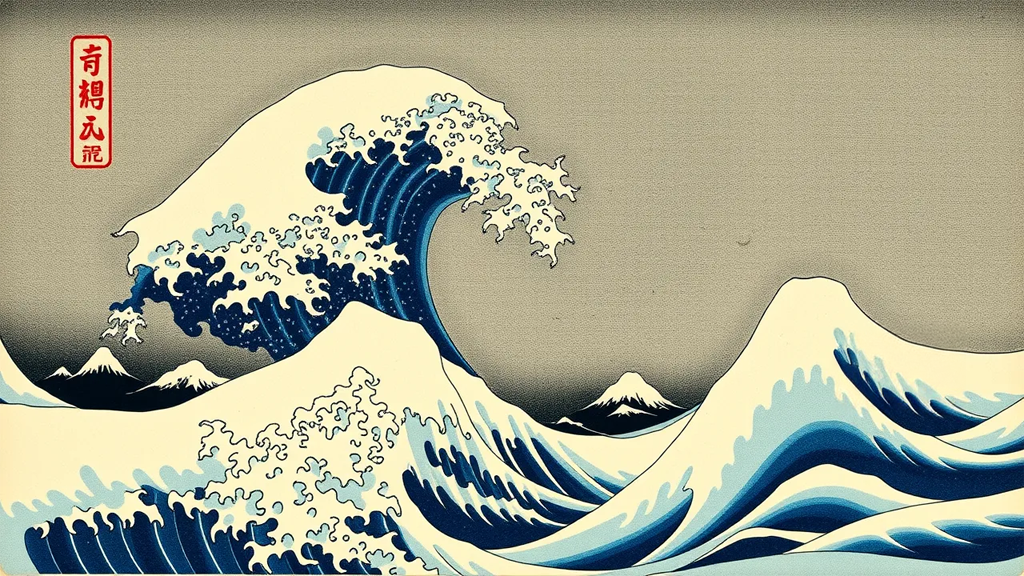
The Best Known Type of Japanese Woodblock Art
Masterpieces: From Katsushika Hokusai to Utagawa Hiroshige
Among japanese woodblock prints, a few names and works stand well above the rest. Katsushika Hokusai is perhaps the most internationally recognized, with his Thirty-six Views of Mount Fuji series (especially Great Wave off Kanagawa) achieving near-mythic status. Utagawa Hiroshige brought lush, atmospheric landscapes into everyday homes with his series Fifty-three Stations of the Tōkaidō, showing the intersection of nature and the human journey along Japan’s historic roads.
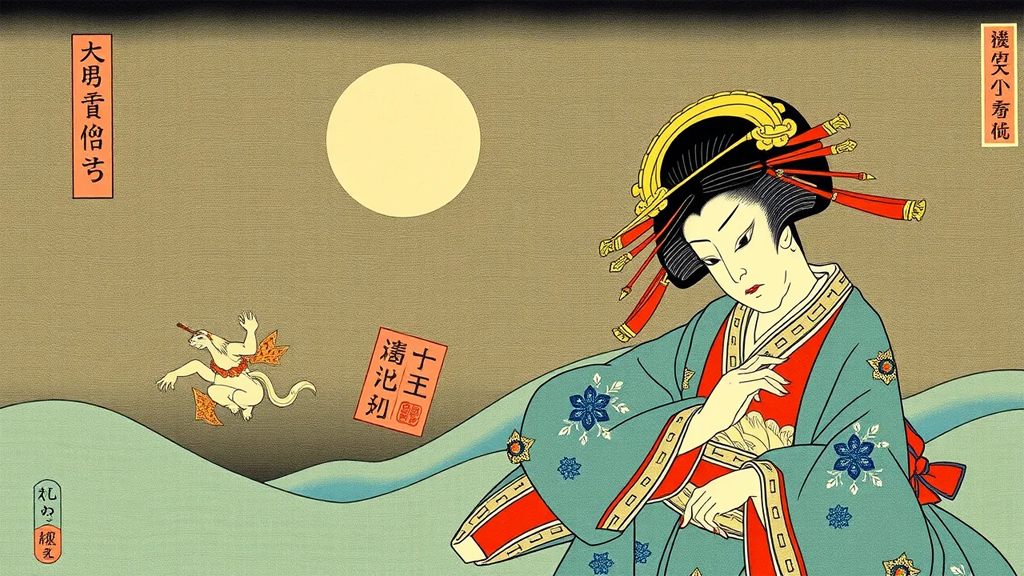
Other prominent figures include Utagawa Kunisada, renowned for his dynamic scenes of kabuki actors and the vibrant life of Edo’s theaters.
These masterpieces stand out not only for their aesthetic innovations, but for the large number of impressions that reached new audiences domestically and abroad. Through global exhibitions and partnerships with institutions like the Museum of Art, these works continue to enchant and inspire. From subtle monochrome prints to multi-color extravaganzas, the best-known Japanese woodblock prints are both relics of history and continuing sources of artistic power.
Themes and Motifs in Iconic Japanese Woodblock Prints
Recurring themes in Japanese woodblock prints reflect the full spectrum of Japanese society and imagination during the Edo period. Artisans rendered famous landscapes, scenes of daily urban life, graceful women, mythic tales, and the personalities of kabuki actors in vibrant color woodblock printing. Each theme carried symbolic weight—the changing seasons could signify renewal and impermanence, while images of the floating world depicted leisure as both fleeting and essential.
Nature scenes and dramatic weather events, such as storms and waves, remain some of the most widely recognized motifs—a testament to the powerful relationship between nature and the human spirit in Japanese art. These enduring motifs have shaped Asian art and printmaking techniques, influencing wide swathes of Western painters and printmakers. The intricate harmony of technique and theme is what gives Japanese woodblock prints timeless appeal, both as cultural documents and as living works of art.
What Kind of Wood is Used for Japanese Woodblock Prints?
Cherry Wood and Other Materials in Traditional Woodblock Printing
The choice of material is fundamental to the quality and beauty of japanese woodblock prints. Traditionally, artisans favored cherry wood for its fine, uniform grain and hardness—qualities ideal for achieving intricate, crisp details necessary for the delicate lines of Japanese prints. Cherry wood resists warping and allows for repeated use, making it essential for print runs requiring a large number of impressions. In addition to cherry, other woods such as magnolia and katsura were sometimes incorporated for different textural or tonal effects, though cherry remains the gold standard for most woodblock print masterpieces.
This careful selection reflects the “traditional method” ethos: the material is as much a part of the art as the design itself. Each block is polished and treated to maximize its lifespan, contributing to the unique textures captured within color woodblock prints. The block’s grain subtly imprints itself onto the paper—an authentic signature connecting every finished print to the materials and hands that created it.
Understanding the Role of Material in Art Quality
The wooden block and its qualities have a significant impact on the final print. A smooth, close-grained cherry wood block allows artisans to carve intricate patterns and detailed motifs that would be lost in a more porous or inconsistent wood. When using the traditional method, artisans ensure that every surface is meticulously prepared, which directly affects the sharpness, vibrancy, and endurance of the finished japanese woodblock print.
Besides the block itself, the interaction between ink, paper, and wood impacts the expressive possibilities for the printmaker. High-quality, hand-made washi allows water-based pigments to be absorbed with subtle gradation, maximizing the depth of color on paper. The choice of materials ultimately defines whether a print will age gracefully or become susceptible to fading and damage—making material knowledge crucial for both artists and collectors.
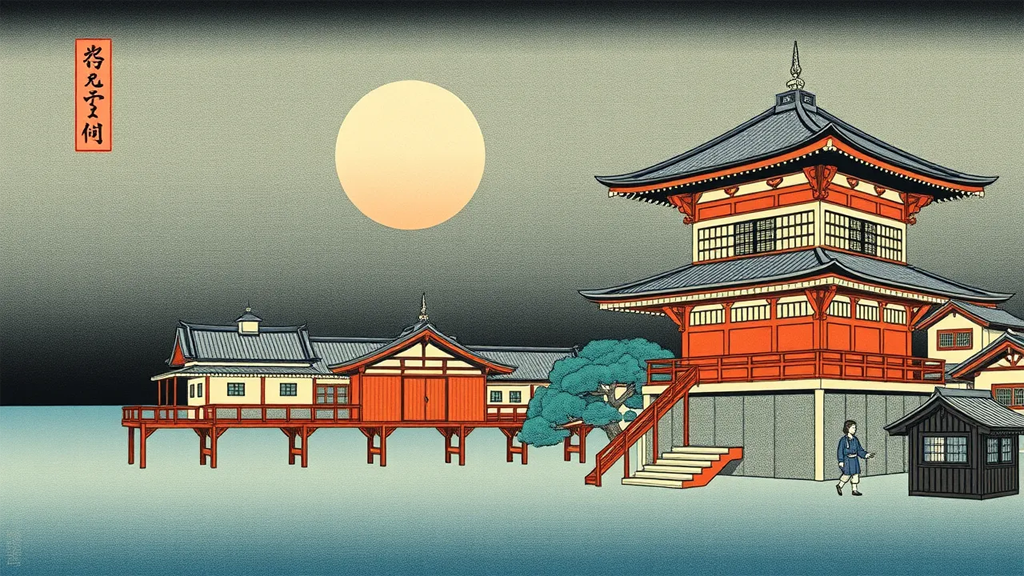
Japanese Woodblock Prints Through the Ages: A Journey from the Edo Period
Influence of Social Change on Woodblock Print Themes
Japanese woodblock prints emerged as a dominant artistic genre during the Edo period (1603-1868), a time when urbanization and social mobility flourished. The merchant and artisan classes—a departure from the strict feudal hierarchies—drove demand for affordable, accessible art. Hence, themes began to reflect a wider variety of interests: bustling cityscapes, kabuki theaters, fashion trends, and even satirical takes on current events. As social change swept through Japan, artists like Suzuki Harunobu captured the spirit of the times with playful, innovative prints that resonated with new audiences.
This democratization of art continued in the 19th century as print runs increased and access broadened. The color woodblock print became not just decoration, but a medium for social commentary and personal expression. These evolving themes demonstrate how Japanese woodblock printmaking is intertwined with shifts in society, capturing both the aspirations and anxieties of its era in vibrant detail.
Transition from Edo Period to Modern Japanese Art
The transition from the Edo period into modernity was marked by both continuity and innovation in japanese art. As Japan opened to Western influences in the Meiji era, new techniques and subject matter began to appear. Artists started blending Eastern and Western styles, further enriching the tradition of woodblock printing. These changes were evident in both the subject matter (incorporating scenes from everyday city life, foreign landscapes, and objects) and the technical advances (like synthetic dyes for a wider spectrum of colors).
Modern Japanese artists continue to reinterpret woodblock printing, embracing its foundations—precise carving and vibrant color on paper—while exploring new narratives relevant to 21st-century audiences. The influence of historical japanese woodblock prints remains undeniable in contemporary artistic processes, underscoring their continued relevance and vitality.
Japanese Woodblock Printing Techniques: Step-by-Step Process
Carving the Design: Tools and Skills
The creation of a japanese woodblock print begins with designing and carving. Artisans use specialized tools—chisels, gouges, knives—to etch a reverse image onto a carefully selected cherry wood block. This is a stage requiring immense skill and patience: even a small slip can alter the intricacies of the final image. The carver must follow the lines and shading of the designer’s original sketch with careful attention, ensuring that textures and details are preserved across every impression. The process can take days or even weeks, making each block a unique and irreplaceable work of art in itself.
Every carved line, every subtle groove, carries meaning. The traditional method, handed down for generations, emphasizes precision and respect for the wood’s natural grain. For multi-color designs, multiple blocks are created, each corresponding to a different pigment. This careful division of labor ensures that, when printed, lines register perfectly and colors align with astonishing clarity.
Inking and Printing: Achieving Artistic Precision
With the block carved, the next phase is inking and printing—turning wood into living art. Using natural brushes, printers apply water-based pigments to the relief surface, blending hues to achieve desired gradations. This is where the “color woodblock print” comes to life: different blocks are inked with separate colors, then pressed in careful sequence onto color on paper. A slight adjustment in pressure, ink consistency, or paper alignment can result in strikingly different effects.
Finally, paper is placed on the inked block and burnished gently with a hand tool called a baren. This meticulous process is repeated for each color layer to create vibrant, dimensional images. The magic of japanese woodblock printing lies in its harmony between hand, material, and image—a true blend of artistry and science that has inspired a large number of artists, both in Japan and worldwide.
-
Selecting the woodblock
-
Carving the image
-
Applying ink with brushes
-
Pressing the paper
-
Repeating for color layers
|
|
|
Comparison of Woodblock Printing Techniques and Tools |
|
Aspect |
Japanese Woodblock |
Western Woodcut |
|---|---|---|
|
Ink Type |
Water-based (transparent, vibrant colors) |
Oil-based (thicker, more opaque) |
|
Paper |
Washi (mulberry-based) |
Rag or pulp-based papers |
|
Carving Tools |
Fine knives, chisels, gouges (precision for detail) |
Heavier gouges and chisels (bolder lines) |
|
Color |
Often multi-colored (nishiki-e method) |
Primarily black and white; some color in later periods |
|
Image Registration |
Kento marks for precise alignment |
Varying registration, less standardized |
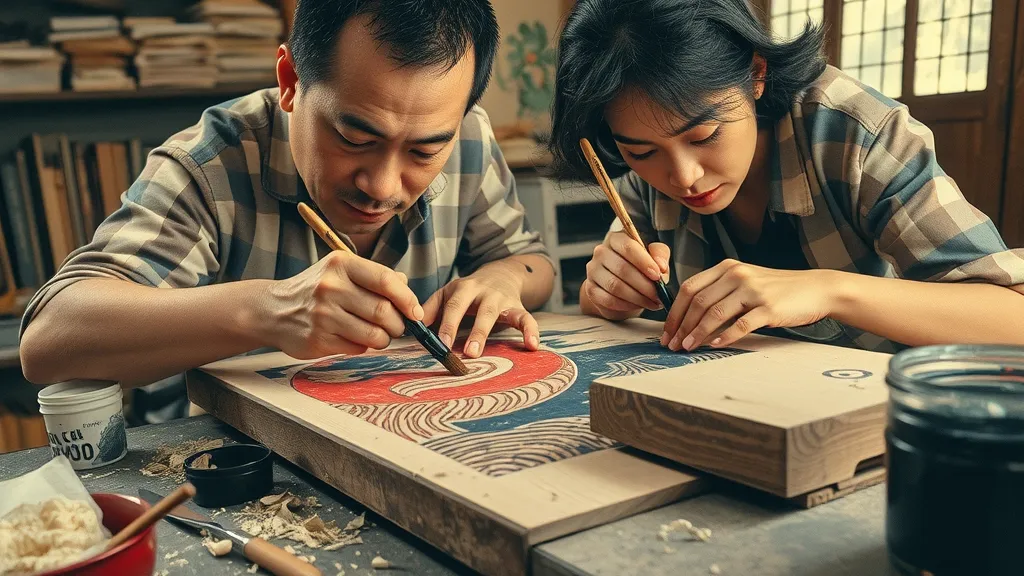
Master Artists: Katsushika Hokusai, Utagawa Hiroshige, and Utagawa Kunisada
Signature Works and Their Global Impact
No discussion of japanese woodblock prints is complete without mentioning the great masters. Katsushika Hokusai revolutionized japanese art with visionary works like Great Wave off Kanagawa, which not only epitomizes the potential of color woodblock printing but also symbolizes the transcendent beauty and power of nature. Utagawa Hiroshige expanded the reach of landscape prints with his evocative scenes of the Edo period, while Utagawa Kunisada provided insight into the drama and spectacle of kabuki theater with dynamic kabuki actor portraits.
The influence of these artists extends far beyond their lifetimes. Their prints were collected by Western artists and featured in major museum of art exhibitions around the world, inspiring Impressionists and modern Asian art movements. Today, their signature works are cornerstones of esteemed museum collections and continue to spark new creative directions for contemporary artists globally.
How Japanese Woodblock Masters Influenced Asian and Western Art
Japanese woodblock art’s intersection with Western painting, especially during the 19th-century Japonisme craze, was formidable. European artists such as Van Gogh and Monet drew direct inspiration from the composition, color palettes, and subject matter of japanese prints. This exchange marked a pivotal moment in art history, as the aesthetics and techniques of Asian art began to reshape the contours of Western visual language. In modern times, exhibitions in places like Los Angeles and renowned institutions like the Museum of Art highlight this ongoing exchange.
The legacy of Hokusai, Hiroshige, and Kunisada thus transcends borders and disciplines, pushing artists and collectors to continually explore the potential of the color woodblock print. Their mastery is a reminder that while tools and materials may change, the Japanese woodblock’s creative spirit remains vital and evolving.
"Hokusai’s wave is more than an artwork; it’s a symbol of the power and transcendent beauty of nature."
Modern Resonance: Japanese Woodblock’s Influence on Contemporary Asian Art
Revival and Preservation Initiatives in Los Angeles and Worldwide
The allure of japanese woodblock art thrives not only in Japanese museums but increasingly on a global stage. Major cities like Los Angeles have become centers for the preservation and revival of woodblock artistry through regional museum of art exhibitions, workshops, and cultural festivals. These initiatives serve both to educate new generations and to support artisans keeping traditional techniques alive. Across America, Europe, and throughout Asia, contemporary exhibitions celebrate classic and modern japanese woodblock prints, ensuring that the medium continues to evolve and remain accessible.
Many organizations and collectors are now focused on archiving historic impressions and supporting artists experimenting with new styles. This blend of preservation and innovation reflects a broader movement within Asian art, where cross-disciplinary collaboration is helping maintain the cultural legacy of woodblock prints for the future. The combination of traditional skill and curatorial expertise offers hope for a continued renaissance in japanese woodblock printmaking.
How Japanese Woodblock Techniques Inspire Present-Day Artists
Contemporary artists—both in Japan and abroad—are drawing fresh inspiration from the japanese woodblock print tradition. Modern practitioners reimagine woodblock techniques using digital methods or create bold, original works blending classic motifs with new narratives. In cities like Los Angeles, collaborative artist residencies and gallery shows continue to feature innovative work alongside the masters.
Some artists are revisiting age-old subjects, such as the floating world or kabuki actor iconography, updating them with contemporary themes or merging them with global styles of Asian art. Others experiment with color woodblock printing using unconventional materials. This ongoing evolution demonstrates that while rooted in centuries-old practices, the tradition of Japanese woodblock remains a vital and dynamic force, shaping the visual language of art today.
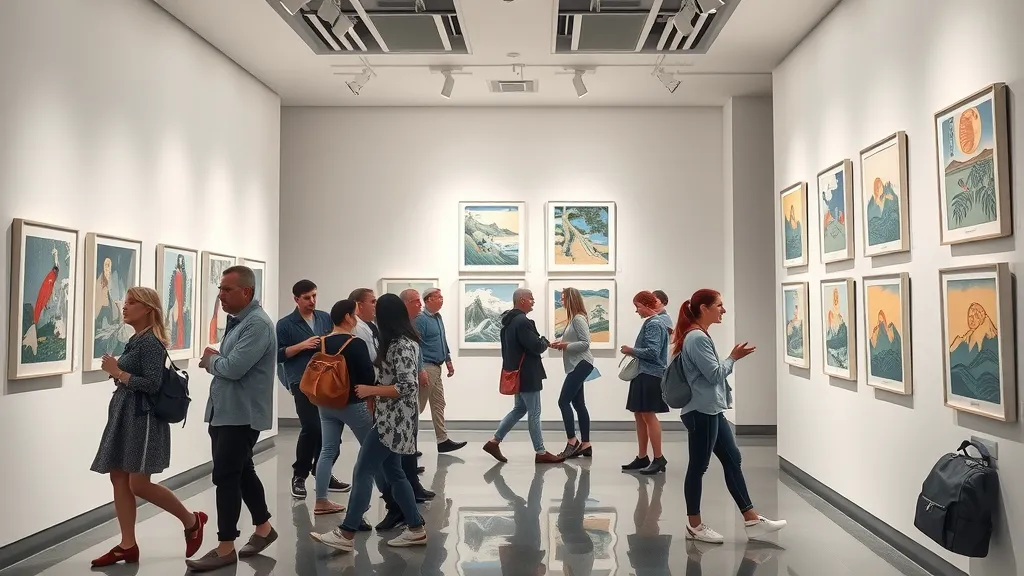
Collecting Japanese Woodblock Prints: Expert Tips and Value Insights
Key Factors in Authenticating Japanese Woodblock Prints
Authenticating a japanese woodblock print requires attention to a number of key factors. Signatures and seals of the artist—often present in traditional kanji script—are crucial for verification. The print edition and condition (including the crispness of carving, paper texture, and ink stability) can also suggest whether a piece is a rare original or a later reproduction. Furthermore, collectors and enthusiasts often consider the historical context: prints from the Edo period or works by renowned artists like Hokusai, Hiroshige, or Kunisada carry additional credibility and value.
Detailed provenance, such as a record of previous ownership or museum of art documentation, adds to a print’s authenticity. Understanding the technical signs of genuine color woodblock printmaking—like slight paper embossing, water-based pigment diffusion, and natural washi fiber—is essential for distinguishing an original japanese print from a copy. For those new to the field, consulting with reputable dealers or institutions like museum of art in Los Angeles can offer valuable guidance.
Market Trends and What Collectors Should Look For
The japanese woodblock print market has grown in both size and sophistication as interest in asian art rises worldwide. Seasoned collectors pay close attention to market trends, notably the growing appreciation for works with well-documented provenance and exceptional condition. The demand for early impressions—those made while the original block was still crisp—is particularly strong, and prints featuring rare motifs or unusual colors can command premium prices.
Collectors are also keen to acquire works that highlight the evolution of woodblock art, from monochrome pieces to full-color prints. Masterpieces by Katsushika Hokusai, Utagawa Hiroshige, and Suzuki Harunobu remain highly sought after, but younger collectors are increasingly drawn to contemporary reinterpretations or collaborative projects between Japanese and international artists. The field’s diversity ensures that, whether you are a seasoned enthusiast or a newcomer, there’s always something new to discover in the world of japanese woodblock prints.
-
Signatures and seals
-
Print edition and condition
-
Historical context
-
Subject matter and artist
Preserving Japanese Woodblock Prints: Best Practices
Climate, Lighting, and Handling Considerations
Preserving a japanese woodblock print requires meticulous attention to environment and handling. Climate is crucial: prints should be stored in stable, moderate humidity (around 50%) to prevent both drying and mold. Light exposure, especially to direct sunlight or UV, is a leading cause of fading in delicate color woodblock prints. Framing with UV-filtering glass and keeping artwork out of bright, fluctuating lighting conditions help protect both pigment and paper. When handling, always use clean cotton gloves to prevent oils from damaging the surface, and support the print at multiple points to avoid stress on old, fragile fibers.
Collectors and institutions such as the museum of art employ archival storage solutions—including acid-free folders, flat files, and controlled display cases—to keep prints in optimal condition. By following industry best practices, collectors ensure their japanese woodblock prints not only retain beauty and value, but also remain accessible for future generations.
Preventing Common Damages in Woodblock Print Collections
Even with proper storage, certain risks remain for woodblock print collections. Humidity-related warping, foxing (brown spotting from mold or metal impurities), or mechanical tears are chief threats. Using acid-free materials and regularly monitoring for pests and mildew are core strategies for preservation. It’s also wise to avoid mounting prints directly onto boards or using adhesive tapes, which can degrade both the paper and the pigments over time. Experts recommend periodic professional inspections, especially for rare or high-value pieces.
Collectors should limit unnecessary handling and avoid stacking prints, reducing chances for abrasion or corner damage. Following these precautions can prevent the most common forms of deterioration, allowing japanese woodblock prints to remain as vivid and inspiring as when first pulled from the carver’s block centuries ago.
|
|
|
Environmental Factors Affecting Japanese Woodblock Prints |
|
Factor |
Recommendation |
Possible Issues |
|---|---|---|
|
Humidity |
Stable, around 50% |
Warping, mold, paper brittleness |
|
Light Exposure |
Low, indirect, UV-filtered |
Fading, pigment degradation |
|
Handling |
Cotton gloves, minimize direct touch |
Staining, tears, print abrasion |
|
Storage |
Acid-free, flat, or archival frames |
Chemical leaching, foxing, creasing |
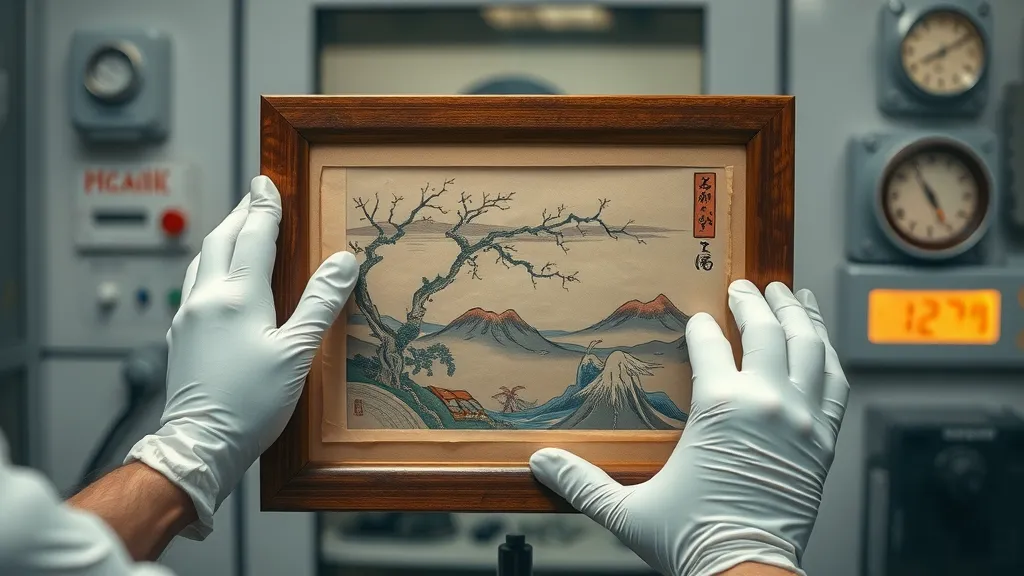
People Also Ask About Japanese Woodblock Art
What is a Japanese woodblock?
A japanese woodblock is a hand-carved wooden block, often cherry wood, used by artisans to create prints by pressing inked images onto paper. The process involves a unique blend of carving, inking, and printing—usually with water-based pigments and delicate washi paper—to produce visually rich and culturally significant art. The tradition reflects not only technical mastery but also the spirit and evolution of japanese culture over centuries.
What is the name of the Japanese woodblock?
The most widely recognized name for Japanese woodblock prints is ukiyo-e, meaning “pictures of the floating world.” However, the broader artform is also referred to as japanese woodblock print or simply woodblock prints, encompassing different styles and subject matter throughout art history. Master printmakers and their distinctive works have also contributed to the diverse vocabulary of the medium.
What is the best known type of Japanese woodblock art?
The best known type of japanese woodblock art is the ukiyo-e print, epitomized by works from artists like Hokusai and Hiroshige. These prints often portray landscapes, kabuki actors, beautiful women, and everyday urban scenes—rendered in vivid, multi-color designs using the nishiki-e method. The Great Wave off Kanagawa is perhaps the most famous example, symbolizing the enduring global impact of japanese woodblock prints.
What kind of wood is used for Japanese woodblock prints?
The primary wood used in japanese woodblock prints is cherry wood, valued for its smooth, dense grain that enables detailed carving and consistent print quality. Other woods, like magnolia or katsura, are sometimes used for specific effects or textures, but cherry wood remains the standard for tradition and quality in both historic and modern printmaking.
Japanese Woodblock in the Digital Era: Technology and New Creations
Adapting Traditional Techniques with Digital Tools
In the 21st century, artists are blending traditional japanese woodblock techniques with cutting-edge digital tools. Digital sketching programs help artists plan layered compositions, while laser cutters can replicate fine carved lines with high precision. However, many practitioners find that the tactile, meditative qualities of hand carving are irreplaceable, using technology mainly to streamline or expand creative possibilities. This synergy of old and new marks a thrilling new era for woodblock printing, widening its appeal and accessibility worldwide.
Galleries in urban centers like los ang are now featuring shows that highlight both the craftsmanship and digital innovation of today’s japanese woodblock artists. Whether using traditional methods or new media, the unbroken creative spirit of the woodblock tradition remains at the heart of this cultural renaissance.
Emergence of NFT Japanese Woodblock Artworks
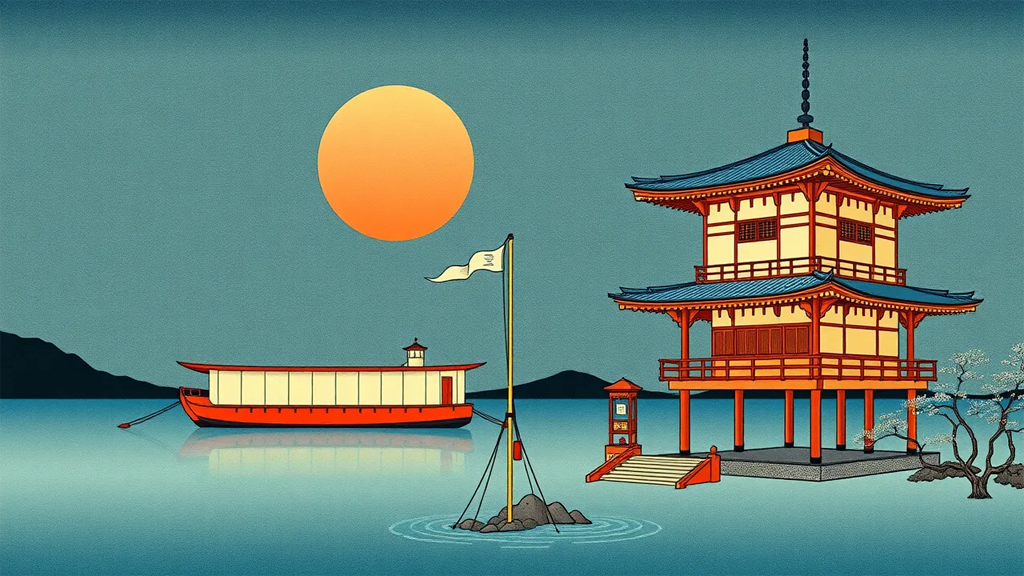
The arrival of NFTs (non-fungible tokens) has ushered in a digital frontier for japanese woodblock prints. Artists mint digital representations of woodblock prints as blockchain-backed collectibles, reaching an entirely new audience. This innovation allows traditional motifs to be appreciated in contemporary spaces—while also promoting the global reach and accessibility of Japanese printmaking. The values of authenticity, rarity, and artistic heritage that have always defined japanese prints translate well into the digital landscape, ensuring the continued evolution of this historic art form in the era of NFTs.
Frequently Asked Questions About Japanese Woodblock
How can I start making my own Japanese woodblock prints?
Beginners can start with basic carving tools and soft wood, studying traditional ukiyo-e methods for guidance. Learn by following step-by-step tutorials and focus on mastering one color on paper at a time before experimenting with layering and multi-block techniques.
Are all Japanese woodblock prints considered valuable?
Originals by master artists or those in great condition tend to be most valuable, while reproductions can range in price. The edition, provenance, subject matter, and even the artist’s reputation all impact market value and collectibility.
What is the difference between Japanese woodblock and Western woodcut?
Japanese woodblock focuses on water-based inks and delicate papers, while Western traditions often use oil-based inks. The technique, tools, and artistic objectives can vary greatly between cultures, resulting in different visual results and thematic emphasis.
Key Takeaways: The Lasting Power of Japanese Woodblock
-
Japanese woodblock has a profound influence on art worldwide.
-
Key techniques and materials define the authenticity of prints.
-
Master artists like Hokusai and Hiroshige are central to its legacy.
-
Contemporary practices keep japanese woodblock vital and evolving.
Conclusion: Embracing the Living Art of Japanese Woodblock Today
"To understand japanese woodblock is to appreciate both the technical mastery and the timeless human narratives captured in each print."
Japanese woodblock art endures because it merges craftsmanship, tradition, and innovation—a living legacy waiting for you to explore and appreciate.
Explore, Learn, and Collect: Your Invitation to the World of Japanese Woodblock
Ready to experience the enduring allure of japanese woodblock art firsthand? Visit a local museum of art, join a workshop, or start your own print collection. Let this timeless art spark your curiosity and fuel your passion for creativity!
- Beyond Ukiyo-e: The Diverse Landscape of Japanese Woodblock Art
- Evolution of Japanese Woodblock Printing: Tracing the Roots of an Artistic Tradition
- From Edo to the World: How Japanese Woodblock Prints Shaped Western Art and Culture
- Japanese Woodblock Art Today
- Japanese Woodblock History
- Masters of the Blade and Block: The Collaborative Artistry of Samurai and Woodblock Printmakers
- Resilience and Reinvention: Japanese Woodblock Printing in the Face of Modernization
- Techniques and Traditions: Unraveling the Intricacies of Japanese Woodblock Printmaking
- The Influence of Nature in Japanese Woodblock Prints: Depicting Seasons and Symbolism
- The Societal Mirror: Reflecting Daily Life in Edo Period Woodblock Prints
- The Woodblock Artisans of Edo: Masters of Craftsmanship and Creativity
- Ukiyo-e Renaissance: Exploring the Golden Age of Japanese Woodblock Prints



